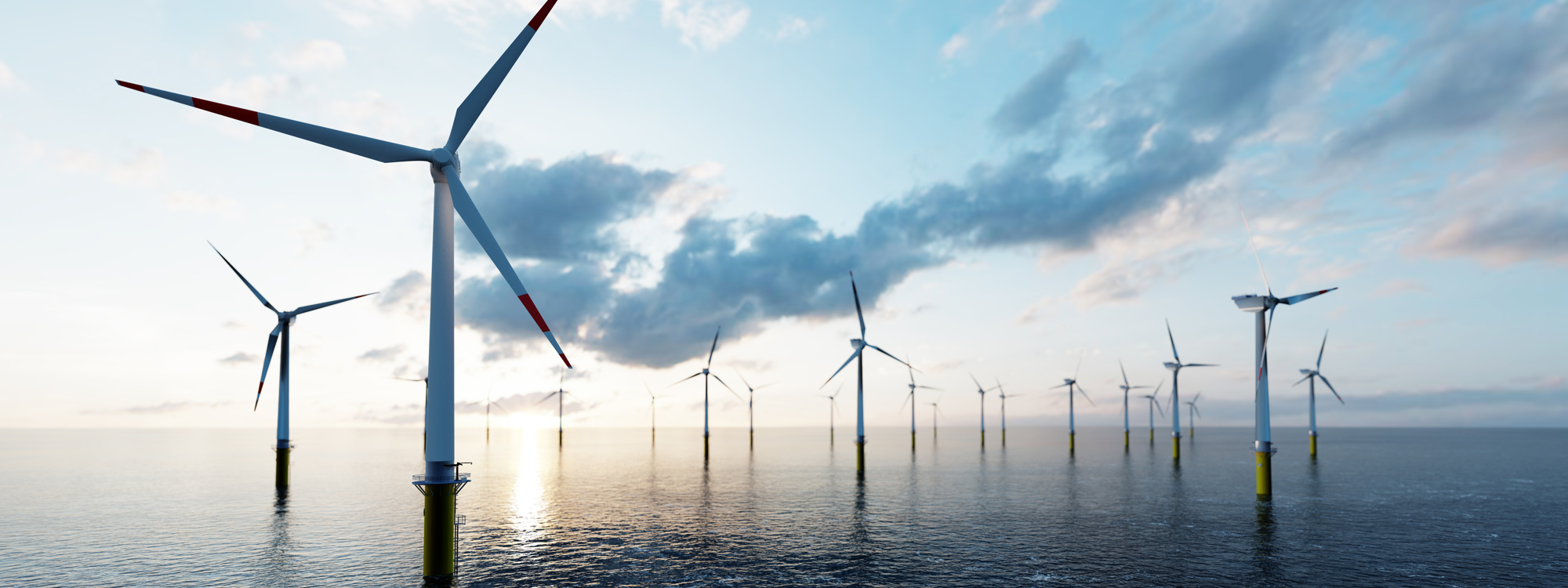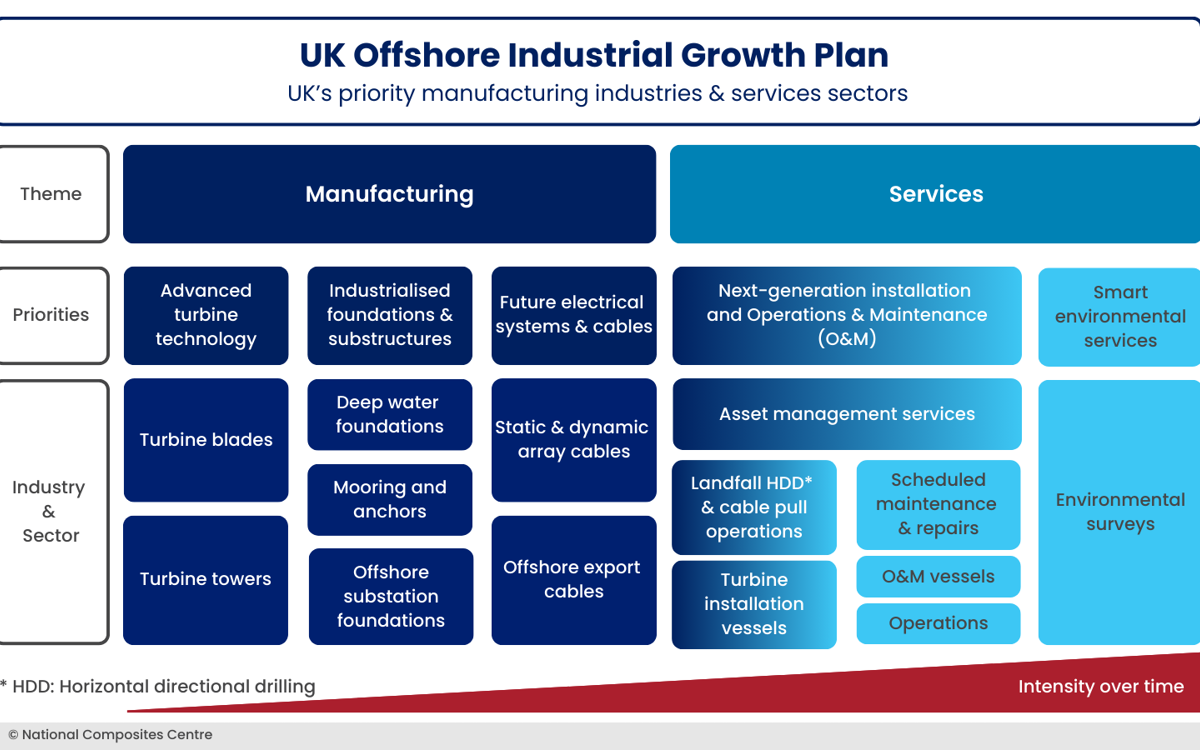
UK Offshore Wind Industrial Growth Plan
2025 is shaping up to be a pivotal year for UK offshore wind, with the National Composites Centre (NCC) playing a central role in enabling the blade and tower development to anchor this national opportunity. As a key contributor to the UK Offshore Wind Industrial Growth Plan (IGP), Dr. Peter Giddings, Chief Engineer for Energy, will be sharing a series of articles to demystify the future industries and ambitions set out in the IGP. In this article, Peter shares an insider’s overview on ‘how’ the industry plans to make the IGP’s call to action a reality.
It's been an exciting year for offshore wind in the UK. Record auction rounds, changes in our institutions, investments announced and the release of the Offshore Wind Industrial Growth Plan (IGP), an ambitious plan for the role the UK should play in the global offshore wind market. It has felt to me like a year where we’re gearing up for a big push to come.

The IGP was released in April 2024 and laid out a clear justification and direction for change founded on the combined voices of industry, government and the R&D community. The plan sets out the required end-states for each of the industries where the UK has potential to develop a flourishing and competitive supply chain for critical parts of the offshore wind sector. The cool-headed “make: buy” decisions have highlighted seven manufacturing industries and seven service sectors spread across five priority areas where the UK aims to build strength. It also highlights another seven industries that require nurturing so they reach the point where they can be grown rapidly to join the 14 front runners.

For me, the key point is that as an industry we have, in a wonderfully unbashful way, chosen the changes we want to create. There is strong support for ‘why’ action is needed, and the IGP has set out ‘what’ our ambitions are. The time has come for showing that we know ‘how’ to make success happen, as the industry has before.
Alongside the excitement and support at events and discussions, there is a palpable impatience to see the plans put into action and the feeling that they need some tangible detail added before the journey can begin.
There are whispers about what form the “delivery body” will take, and what the funding deal will look like, but I have nothing new to add but conjecture to those debates. Like you, I wait with bated breath, hopefully the Autumn statement will allow me to breathe easy again.
What I can say, is that some of the team that helped craft the plan are mapping out how that delivery body would be stood up and the scope of programmes it would target in its first phase. Sketching the tangible details, to be ready for when the organisations and funding firms up.
Just as the IGP drew together input from across our sector, so this next phase will draft action plans drawing on UK Government, industry and the combined teams of the High Value Manufacturing (HVM) and Offshore Renewable Energy (ORE) Catapults. These plans will be consulted on and refined before they’re launched, but it’s reasonable to expect to start hearing from the team at the end of this year and seeing outputs as funding and structure is clarified.
The quietness is categorically not a sign that no progress is being made, just that some of the threads need to be brought together before a cohesive picture can be shared.
The IGP aims to generate up to £2.1 billion in GVA from a new composite tower manufacturing sector, with an additional £5.4 billion projected over 10 years from expanding the existing blades industry. Our team at NCC will be leveraging partnerships with turbine OEMs and international research collaborations like the TURBO programme to ensure that the blades programme supports our partners to expand and optimise their operations in the UK. A big part of that offering will be forming an ecosystem of businesses around them and helping them leverage connections with ORE Catapult and a focused academic community. We’ve shown that coordinated innovation in every part of the manufacturing ecosystem can bring huge steps in productivity.
We’re proud to see our groundbreaking work on composite towers through the Joule Challenge recognised as a significant national investment opportunity in the IGP. I personally believe that founding a UK industry for composite towers can be a flagship project for British industrialisation in wind. With two other innovative tower projects progressing through design and demonstration in the UK, this industry is primed for an exciting period.
All composite industries need to be building their future plans to fit within a viable circular economy for composites. As established leaders in composites circularity, NCC will be advocating for all blade and tower innovations to align with the best practice guidance created in partnership with developers and regulators through our SusWind programme. To do otherwise would be to waste a golden opportunity to build our future industries as exemplars and exporters of circular economy solutions to the global composites industries.
Over the course of the coming months, we'll unpack some of those future industries, and put some colour to the top-level ambitions set out in the IGP. We’ll provide insider views on the challenges and put forward some areas where further actions will be needed to travel the IGP path. We won’t second guess the detail that will come in specific programme calls, but we will map out options on what needs to be done to convert a plan into industry shaping action.
